Articles
4 Ways to Increase Click and Collect Efficiency AND Profitability
Improve the efficiency AND profitability of your click and collect services with these expert insights.
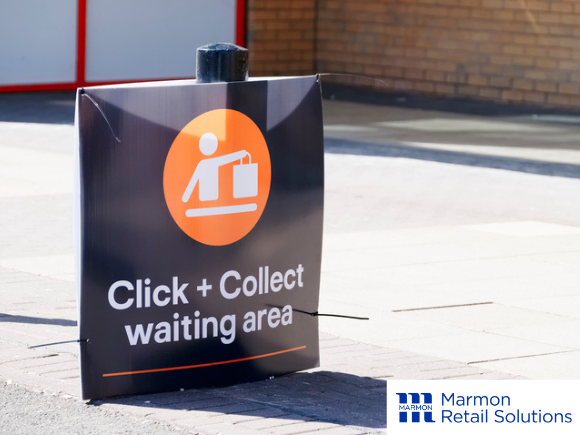
“If you’re not looking at ways to optimize your click and collect, your business is going to suffer. It’s that vital,” says Jeff Stutz, an industry expert in material handling with twenty years of experience.
By 2026, click and collect is projected to exceed 40% of grocery e-commerce sales. However, as many grocers know firsthand, providing this option while also turning a profit remains a huge hurdle. So what are some possible solutions?
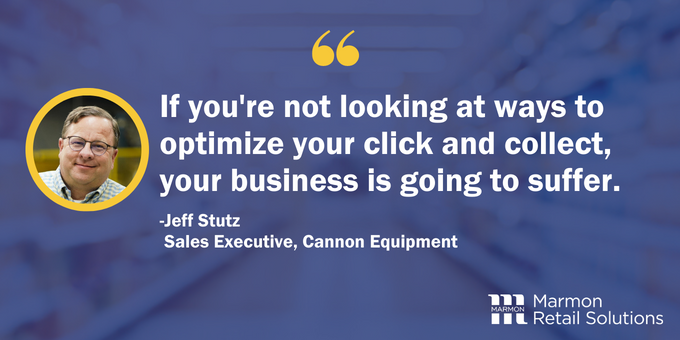
With the help of insights from Stutz, who’s also a Sales Executive at Cannon Equipment, we’ll detail four ways to transform the efficiency and reduce the cost burden of your click and collect services.
Here’s a video on the matter, and then continue reading:
Click and Collect’s Promising Foothold in a New Normal
Customer demand for buying groceries online and picking up at the store—aka click and collect—was already on the rise prior to the pandemic. But that demand definitely hit a spike during the pandemic.
“You had retailers suddenly scrambling to figure out how to fill and stage 50 orders before noon,” says Stutz.
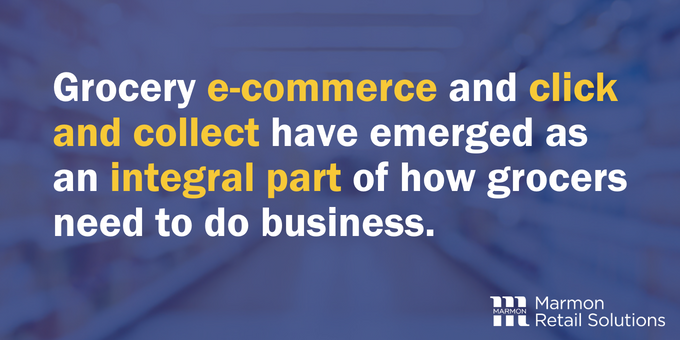
Today, as retail gradually returns to normal, Stutz says it’s a “different normal.” Grocery e-commerce and click and collect in particular have emerged as an integral part of how grocers need to do business. “I don’t think anyone believes click and collect is going away,” he says.
In fact, numerous indicators point to a promising future for click and collect shopping. Here are just a few examples:
- The click and collect option is growing in popularity with digital grocery shoppers. This year it will account for nearly 37% of U.S. grocery e-commerce sales and is expected to be more than 40% by 2026. (Source)
- The average overall household spend of an e-commerce grocery shopper is higher than an in-store shopper. (Source)
- 37% of U.S. consumers in 2022 reported using click and collect at least monthly. (Source)
Encouraging factors like these make it all the more important for grocers to incorporate better tools and smarter approaches for click and collect. Let’s dive into some helpful examples for how to do that.
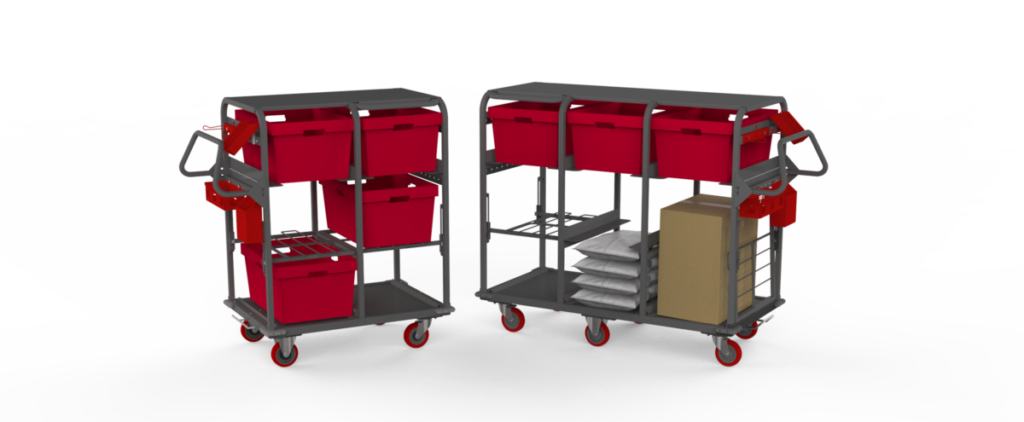
1. Use Custom Picking Carts to Increase Efficiency at the Picking Stage
Most grocers fill orders from stock on the sales floor, which requires store associates to pick items by hand. This has obvious labor cost implications, especially important in an industry with profit margins that generally hover around 1% to 5%.
Research conducted by Cannon Equipment indicates that mid-market regional grocers are in fact placing a priority on finding ways to reduce labor costs at the picking stage.
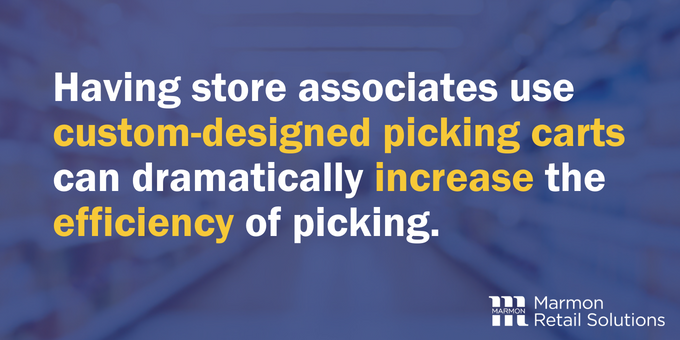
Stutz says having associates use custom-designed picking carts—as opposed to customer shopping carts, for example—can dramatically increase the efficiency of the picking process.
More specifically, it enables those associates to do the following:
“[P]ick eight, nine, ten orders at a time.” Depending on what you need, custom picking carts can enable workers “to pick eight, nine, ten orders at a time into separate totes,” says Stutz, adding that it works equally well if you’re doing zone picking (e.g., picking only frozen items for multiple orders).
Pick faster, navigate more efficiently. A picking cart can have a low-profile so it won’t obstruct sightlines, making it easier to find items. Plus, having tote accessibility from both sides allows faster multi-order picking. Associates can also maneuver more easily through aisles, around shoppers, and in the back room thanks to a lightweight cart with a zero-turn steering radius.
Stay accurate, organized, and on task with added cart features. You can also minimize mistakes and interruptions in the picking process by having everything a worker needs right on the picking cart. For example, the cart can be configured to not only hold totes but also a tool tray, bag holder, trash bin, and a receptacle for a handheld scanner. You can also have foldable shelves to allow for flexible tote storage and oversized items.
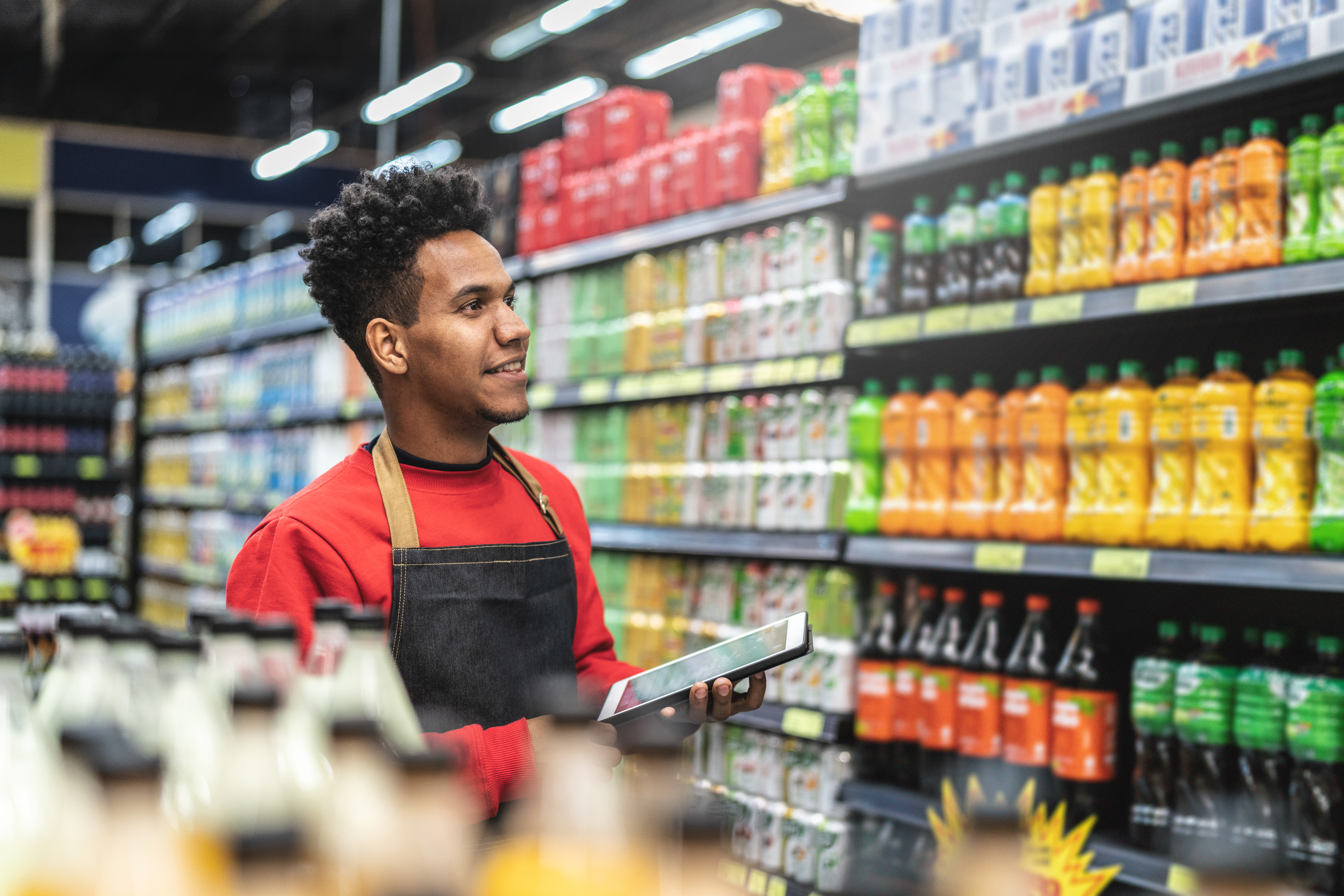
2. Consolidate the Staging to Improve Efficiency and Expedite Collection
Once those items are picked, Stutz says grocers commonly struggle with where to stage them prior to actual customer pickup. To add complexity to that challenge, typical orders include a combination of ambient and refrigerated products as well as frozen items.
Grocers are finding a variety of temporary solutions, including using coolers and freezers meant for in-store items. But Stutz says those areas weren’t really designed for such a thing. “You could have employees running to three different locations to put together an order for pickup, which is extremely inefficient,” he says.
In addition, when customers arrive at the parking lot for their order, they generally want it, like, now. “Grocers tell me all the time that they get negative feedback on pickup wait times,” says Stutz. “A lot of them are shooting to have a customer in and out in five minutes or less. But that’s not always easy.”
With strategies like the following, grocers can improve their staging efficiency, expedite collection, and create happier customers:
Repurpose space for more convenient staging. Has your back room space been frozen in time? This could be an excellent opportunity to reorganize it so you can stage orders more efficiently—and get orders out to customers more quickly (more on that below).
And whether it’s your backroom or another possible area, see if you can relocate any available coolers and freezers to enable more convenient order assembly and collection.
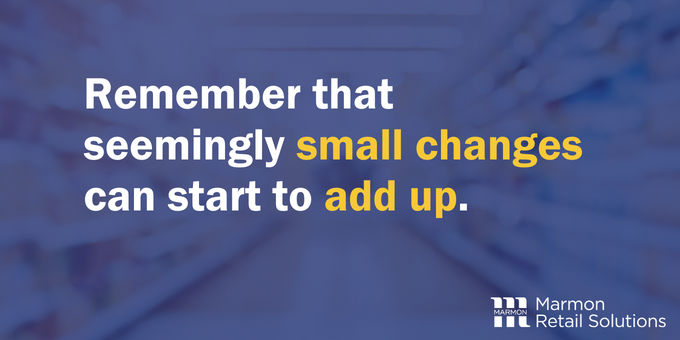
“Let’s say you fulfill 250 click and collect orders a week. Even if you save just 30 seconds per order by rearranging your space, that eliminates more than two hours per week,” says Stutz. “Multiply that out over a year and you’d save more than 100 hours.
Be open to innovative, cost-effective ways to add space. Grocers should also be open to solving their space challenges in more unconventional ways.
Stutz points to a recent example where he worked with a grocer to create a branded temperature-controlled exterior storage container for order staging. “They simply didn’t have the space for handling 160 pickup orders on a Saturday. But now they do, and it didn’t require a major expenditure.”
Bring multiple orders out at once. At peak hours, it’s common to have numerous customers waiting to pick up their orders. Unfortunately, as Stutz explains, a lot of grocers have store associates bring out orders one at a time.
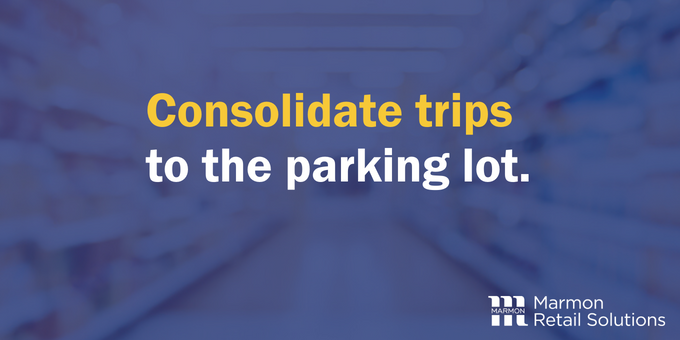
“If you improve your staging, you’re going to be putting those orders together much faster. You can then go a step further and consolidate trips to the parking lot—say, one trip for three customers. That would obviously save time and improve your customer service,” he says.
Custom-designed picking carts (see No. 1 above) could be used to transport multiple orders to the parking lot, suggests Stutz. Or, you could even have carts specially designed for the customer collection step.
3. Encourage Impulse Purchases at Collection
With the growth of click and collect, grocers have seen a notable sales decrease in impulse purchases—i.e., high margin items such as soft drinks, candy, and magazines near the checkout.
“Obviously, a click and collect customer won’t be encountering these impulse items because they’re not entering the store,” says Stutz.
But is there any way to get back at least some of this consumer spend?
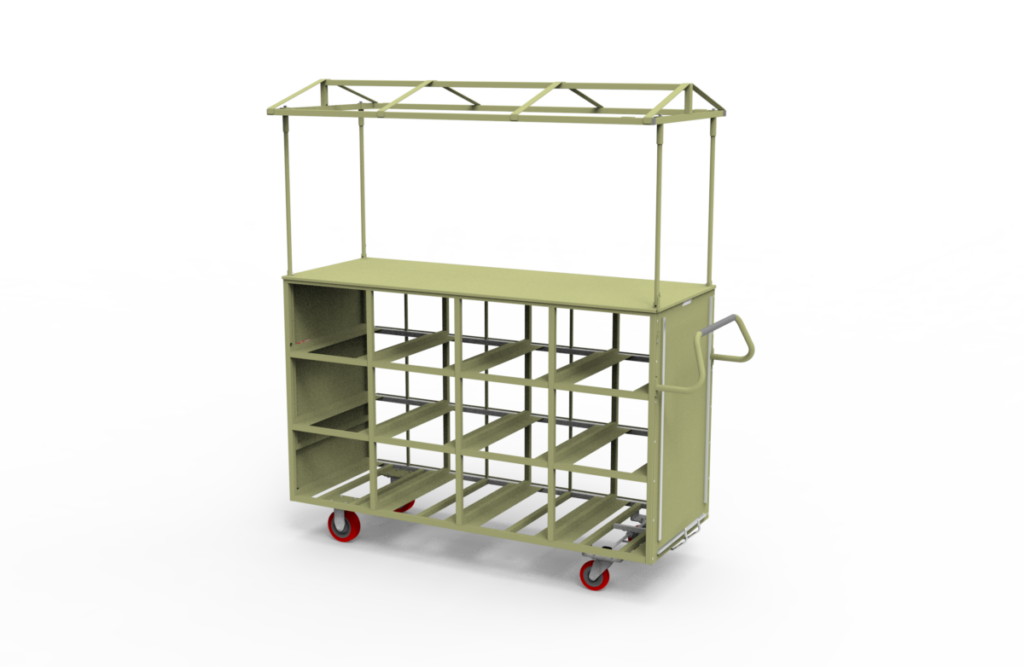
Bring impulse items to the customer. Stutz suggests looking into specially designed click and collect carts that are equipped to hold impulse items.
“You can have popular brands pay for impulse space on the cart, just like they do in store,” explains Stutz. “So when an associate brings a customer’s order out, that customer can see impulse products right on the cart. And they could pay on the spot with a card.”
4. Seek Support from a True Consultant (Not Just a Supplier)
Customized carts and equipment, as you’ve just learned, can go a long way toward helping you provide click and collect more effectively.
If you start searching for a manufacturer to help, Stutz says you’ll want one that not only provides customized products but also conducts a methodical process to thoroughly understand your needs.
More specifically, that process should involve key steps like these:
Going on location for firsthand insights. Speaking on site with both management and the store associates who do the actual click and collect tasks is crucial. “They should be asking about what’s working and what’s not, what you’re hoping to achieve, and what your dream situation would be,” says Stutz.
Documenting important store details. Typical order sizes, special store features, the measurements for your aisles, door thresholds, and other relevant areas—things like these, says Stutz, must be taken into account.
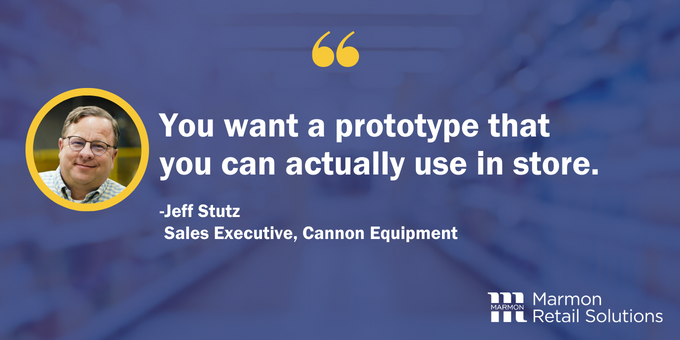
Prototyping to guarantee satisfaction. Ideally, all the information gathered will help the manufacturer produce a product optimized for your needs. But Stutz says it’s not enough to assume. “You want a prototype that you can actually use in store. Maybe it’ll take multiple iterations, but the process should ultimately provide you with a tool that solves real problems.”
And Don’t Forget About the Bigger Picture
Click and collect is, of course, just one aspect of your efforts to generate revenue while meeting the evolving needs of your customers.
Remember that meeting challenges and improving the overall performance of your stores means considering a range of possible solutions. These are just some examples:
- Custom retail merchandising like pusher tray systems, which make it easier for shoppers and pickers to find what they’re looking for faster.
- Display technology and related strategies to help build loyalty and drive engagement at every step of the customer journey.
- Smarter remodel and new-build programs that greatly reduce your points of contact AND empower you to overcome rising costs, longer lead times, and supply chain interruptions.
Marmon Retail Solutions provides integrated products and services that allow your retail improvements to be carried out more strategically, more cost-effectively, and ultimately more successfully.
Learn more about how these retail solutions can work for you.